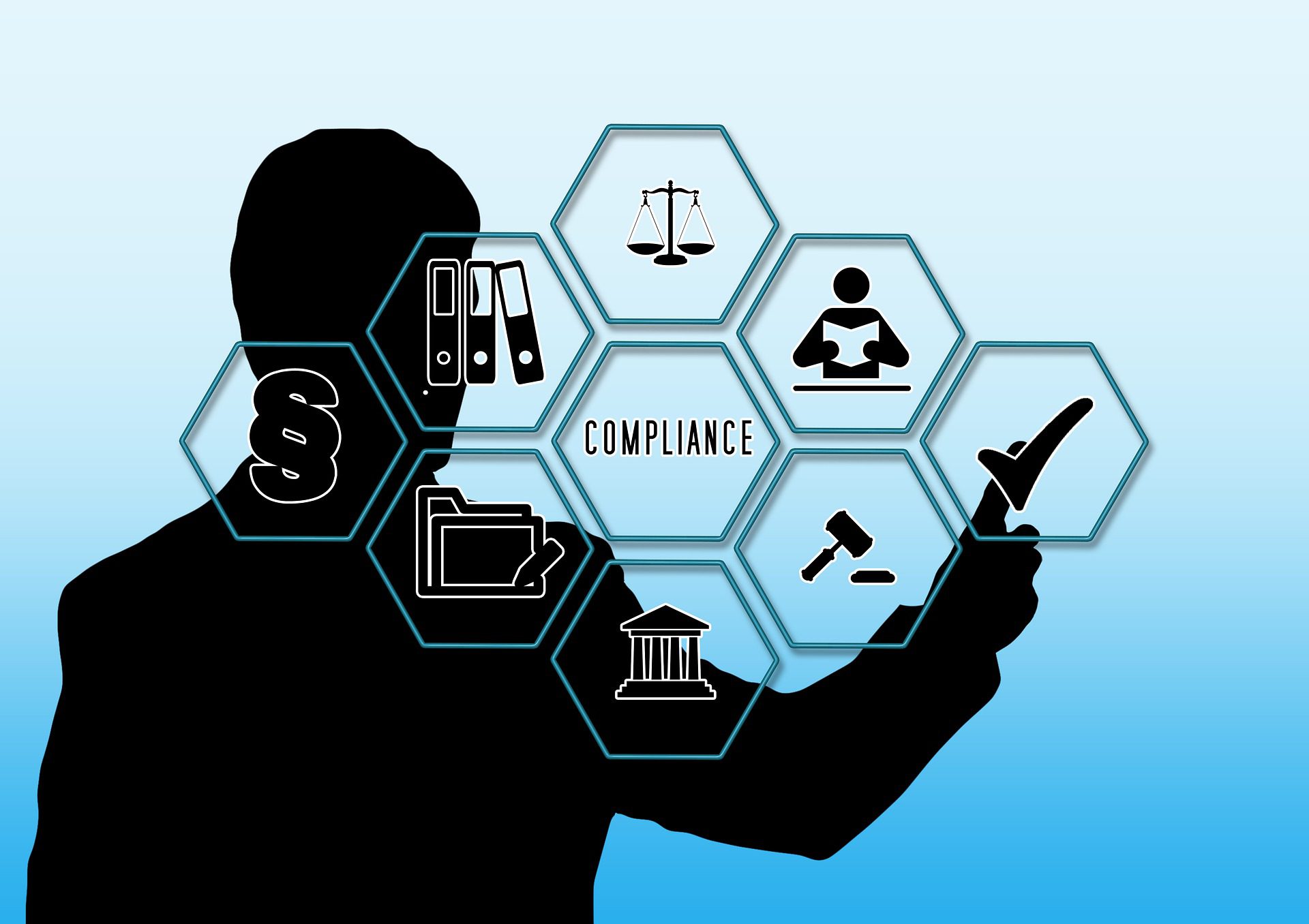Close
Close

Regulatory compliance is a company's adherence to guidelines, specifications, laws, and regulations that are very relevant to business processes. Any person who might violate regulatory compliance always ends up receiving legal punishment like fines. Every organization keeps a record search to track every activity taking place within the company.
Most regulations are set at international, federal, state, and local levels. The department in charge of the organization checks if the subject has been involved in any breach of morality, neglect of duties, professional misconduct, mismanagement, or failure to adhere to the requirements and laws to be made aware of the reputation of a company or an individual.
Full regulatory compliance includes the Sarbanes-Oxley Act, Health Insurance Portability and Accountability Act(HIPAA), etc. They help organizations conduct regulatory and compliance inspections to identify regulatory breach issues and meet legal and regulatory obligations.
Non-compliance can lead to severe reputational damage and a loss of customer trust. Even worse, suspending your license can make it difficult to accomplish your professional goals and objectives. You reduce these risks and contribute to the smooth functioning of daily activities by ensuring regulatory compliance.
Compliance with cybersecurity regulations aids your business in reducing the danger of malware attacks and internal and external data breaches. In addition, you can safeguard consumer, employee, and company data privacy by upholding this form of compliance. If you're searching for a good location to enhance cybersecurity compliance, look no further than the National Institute of Requirements and Technology (NIST). It creates many regulatory compliance standards for cybersecurity for US firms.
For businesses struggling to adapt and update their policies to meet federal, industry, and state norms, perfect compliance may seem like a distant dream. However, you may prepare for these sudden turns in the road more effectively by using a GRC platform with compliance initiatives.
Structured data storage, efficient corporate operations, and regular business operation reports are requirements of many regulatory compliance methods. These gradually increase your business's efficiency, lowering your costs.
Companies can promote themselves more effectively when they comply with regulations and have audit reports to prove it. Likewise, clients can trust their providers more when they can show continuing SOX compliance and rely on SOC 1, SOC 2, and SOC 3 reports. Without these reports, the company might experience a drop in sales and, therefore, in profitability.

The difficulties faced by compliance managers across the industry continue to change based on regulatory pressure, developing trends, and market concerns.
Regulatory authorities desire better audit trails and documentation. Regulators emphasize using data to better understand the system and its flaws. They then demand that businesses have higher standards for documentation in their frameworks for compliance management. This paperwork must be accessible for regulatory examinations, outside audits, and other purposes.
This problem is resolved by automating most of the documentation in contemporary compliance management solutions.
Regulatory inspections consume a lot of resources and frequently go wrong for the organization. A lot of work is required to organize everything and prepare for the regulatory tests. The confusion is made worse by a lack of coordination between the many departments, which stresses out all the workers involved.
Platforms for compliance management offer a distinct regulatory exam workflow that streamlines the procedure across the organization, making it easy for all parties to participate.
Regulatory compliance and change-related tasks are difficult for financial businesses to perform on time. Since other departments frequently carry out these responsibilities, they are not visible to them. Due to this lack of transparency, there may be unforeseen delays due to this lack of sight.
With automated workflows and notifications, the task management solution included in contemporary compliance management solutions makes work inside the organization simple.
The compliance management team can identify non-compliance and offer the necessary corrective actions to make it right. Because the task might not be given adequate attention in other departments, issue resolution is frequently delayed. Compliance teams require a simple method to keep track of all open and resolved issues.
All stakeholders may immediately collaborate throughout the organization using a compliance management platform, leading to quicker issue mitigation.
The organization's board of directors and other executive members rely on the regulatory compliance team's reporting. They lack any other means of observing or evaluating the current regulatory compliance framework's effectiveness or any of the framework's operations.
Executive members of the firm can observe all compliance actions and crucial compliance indicators in real-time, thanks to the dashboards integrated into compliance management systems.
Recent regulatory changes have highlighted the enterprise's lack of regulatory compliance understanding. Regulatory compliance is only achievable if the entire organization is aware of and incorporates regulatory compliance standards into its process.
All employees receive the necessary compliance training following their job functions thanks to learning management systems integrated into compliance platforms.
When the entire organization is committed to maintaining compliance, it can meet regulatory standards. The aims of each business unit within the company align with the organization's overarching objectives. Although compliance is necessary for all departments, it is not the primary aim or target for departments other than risk and compliance. This may make compliance appear to be a barrier for other departments.
All stakeholders can grasp how they contribute to the compliance framework thanks to compliance management tools. In addition, the relevance of compliance activities is brought to light by seeing the whole picture, which improves coordination between the various departments and the regulatory compliance team.
Budgeting for regulatory compliance is another contentious topic. Businesses may want to reevaluate how they allocate the cost of regulatory compliance across the enterprise. Each department within the company must abide by regulatory regulations. So it is unfair to separate regulatory compliance costs from the budgets of all other departments. As a result, budget compliance is appropriate.

Companies must examine their requirements and any industry-specific mandates to comply with regulations. They must then create processes to satisfy these requirements.
The following are typical actions to attain regulatory compliance:
Determine applicable laws: Analyze the laws and compliance requirements relevant to the business's activities and industry. Federal, state, and local laws are among them.
Determine what is needed: Decide which regulations' requirements apply to your organization, and then think about your options for carrying them out.
Processes for document compliance: Processes for ensuring compliance should be documented, along with detailed instructions for each role. Again, audits by regulatory bodies will benefit from this information.
Observe changes and decide if they affect you: Constant revisions are made to compliance standards. Changes must be tracked to establish whether changes are pertinent to the company. If they are, update the processes and educate the relevant people about them.
In conclusion, compliance means agreeing with established rules or requirements, or the process of doing so is known as compliance. Therefore, all the people within the company must be able to follow all the rules and regulations put in place to better the company.
READ MORE: